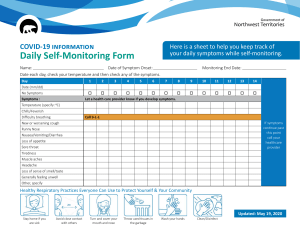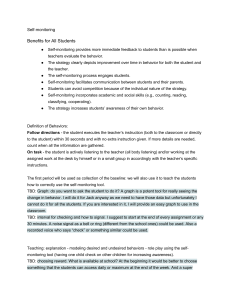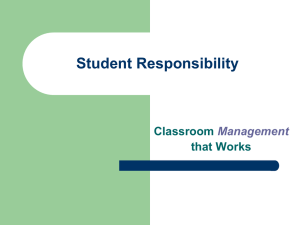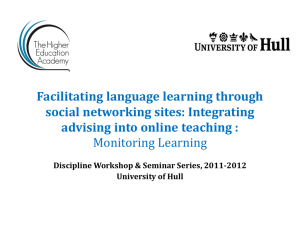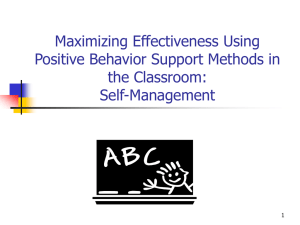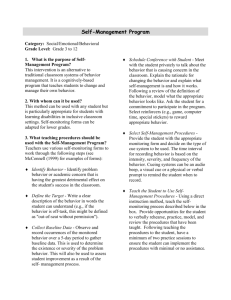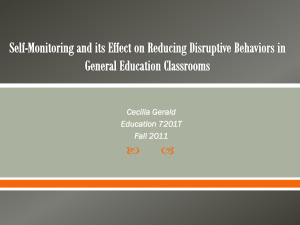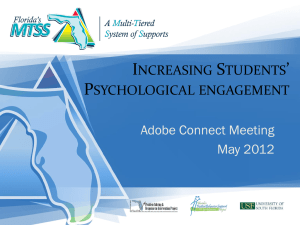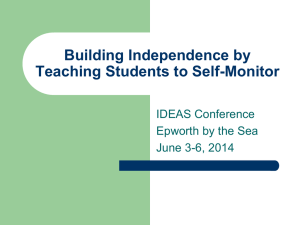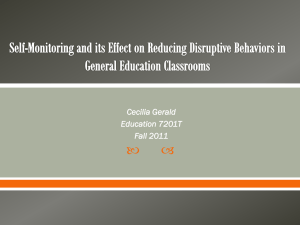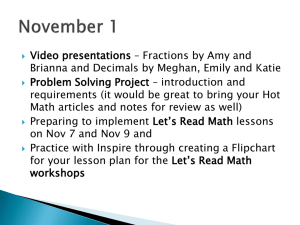Self Monitoring and Self Correction
advertisement
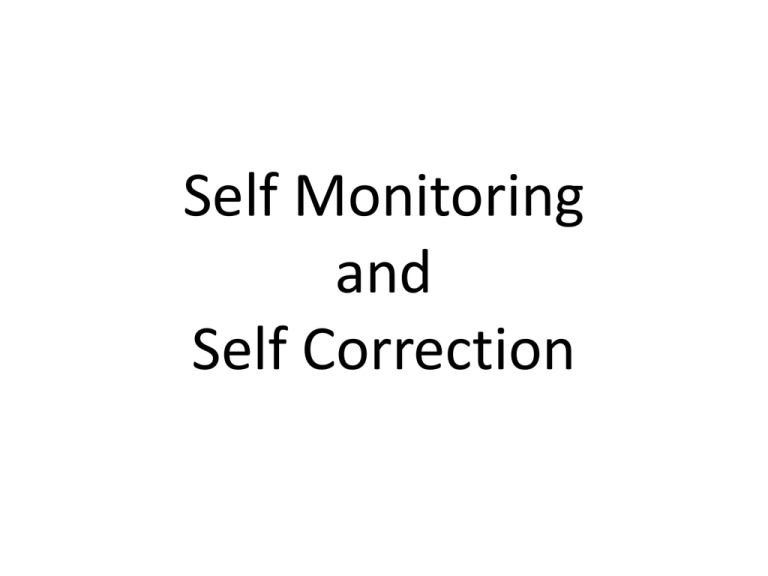
Self Monitoring and Self Correction Self Monitoring The ability of a student to self-monitor his or her performance is a natural step toward becoming independent, which can only happen when students take responsibility for their own behavior and essentially become “agents of change” (Hanson, 1996; Porter, 2002; Rutherford, Quinn, & Mathur, 1996). Academic Self Monitoring Students can also be taught to ask themselves questions about their academic learning and performance, such as asking, “How many math problems have I completed in the last 10 minutes? How many are correct?” (Carr & Punzo, 1993). ~See Math Self-Correction Checklist Example Self-Monitoring 1. Data is used to determine common skill deficits of students 2. Monitoring form is created 3. Students are taught process for self-monitoring and target skill(s) are reviewed. What Does Research Tell Us? • Effective for ALL students K-adult (Jolivette & Ramsey, 2006) • Is effective as a classroom system of behavior management (Carr & Punzo, 1993) • May be used with academic and behavior skills (Shapiro & Cole, 1994) • Is less invasive than teacher managed strategies (Fantuzzo, Polite, Cook, & Quinn, 1988) • May be more effective than teacher managed strategies for some students (Shapiro, DuPaul & Bradley-Klug, 1998) • Contributes to the acquisition of self-regulation which is the crossover skill between academics and behavior (Wery & Nietfeld, 2010) Self-Monitoring falls under the broader category of Self-Management. Some Types of Self-Monitoring • • • • • • • • • A journal A monthly, weekly, or daily calendar or day planner Work Plans and Project Outlines Time management diaries “To Do” lists Daily charts of time spent or work produced Cumulative graphs of time spent or work produced Graphing success Student-led data chat with teacher and parents
